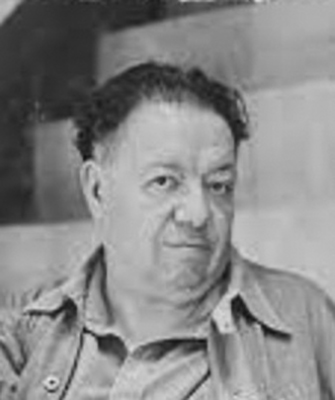DIEGO RIVERA (1886-1957)
 As famous for his art as his tempestuous marriage to Frida Kahlo, Diego Rivera’s talent for historical murals and his tributes to earthy folk traditions made him one of the most influential artists in the Americas and one of Mexico’s most beloved painters. Influenced by Cubism and inspired by Post-Impressionism, it was when Rivera began to study the Renaissance frescoes that he discovered his medium. Rivera is credited with the reintroduction of fresco painting into modern art and architecture and his vision and strong belief in public art led to his painting of some of the most famous and controversial murals in America.
As famous for his art as his tempestuous marriage to Frida Kahlo, Diego Rivera’s talent for historical murals and his tributes to earthy folk traditions made him one of the most influential artists in the Americas and one of Mexico’s most beloved painters. Influenced by Cubism and inspired by Post-Impressionism, it was when Rivera began to study the Renaissance frescoes that he discovered his medium. Rivera is credited with the reintroduction of fresco painting into modern art and architecture and his vision and strong belief in public art led to his painting of some of the most famous and controversial murals in America.
Diego Rivera incorporated his radical politics, being a life long Communist, and his intense devotion to his cultural heritage into this art and saw his medium as an antidote to the elite walls of galleries and museums. He gained fame as a muralist and altered the course of American painting through his ability to incorporate his politics while maintaining a sense of simple historicity. His ability to condense a complex historical subject down to the most essential parts: the struggle of the working class, the effect of war and industry in the name of progress, the life on the American worker, was one of his greatest gifts.
